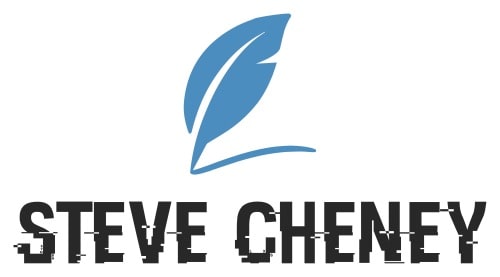In today’s competitive employment market, a top-notch recruiting system is no longer just a luxury—it’s a necessity. These systems are the backbone of an organization’s hiring strategy, ensuring that the process of attracting, evaluating, and onboarding talent is both efficient and effective. However, all systems eventually show signs of aging or inefficiency. Identifying these signs early can save your company time, resources, and potential talent. If your current setup is causing more headaches than hiring victories, it might be time to consider upgrading to a state-of-the-art recruiting systems that can meet modern business demands.
1. Outdated Interface and User Experience
Technological aesthetics and functionality go hand-in-hand, especially in recruitment platforms. An outdated interface isn’t just unattractive; it can significantly impair usability, leading to decreased efficiency among hiring teams. When recruiters spend more time grappling with tech glitches than evaluating candidates, it’s clear there’s a problem.
Moreover, the user experience for candidates is paramount; a complex or clumsy application process can deter top talent from completing their applications. Modern systems offer dynamic, user-friendly dashboards that support faster and more insightful hiring processes, and removing barriers here can lead to both qualitative and quantitative improvements.
Why User Experience Matters
The cumulative effect of poor user experience is measurable in recruitment metrics. High candidate dropoff rates, prolonged time-to-fill periods, and negative feedback can all be traced back to a poorly designed interface. By contrast, systems prioritizing user experience help present a polished and professional brand image. They also reduce training time since users—both candidates and recruiters—can intuitively navigate their functionalities, allowing recruitment teams to focus on more strategic tasks rather than being bogged down by technical difficulties.
2. Integration Challenges
In today’s digital landscape, no system operates in a vacuum. The true power of a recruiting system is revealed in its ability to seamlessly integrate with other essential tools such as CRM platforms, communication apps, and HR information systems. If your current recruiting software has trouble communicating with these platforms, you’re likely wasting valuable time on manual data entry and increasing the risk of errors. Forbes emphasizes the transformative effects that successful integration can have on operations, leading to smoother workflows and reduced friction.
The Impact of Ineffective Integrations
Poor integration can fragment data, making comprehensive reporting and data-driven decision-making difficult. Without a cohesive system, teams might struggle to track where candidates are in the hiring process, miss out on important scheduling, or fail to follow up promptly after interviews. A well-integrated system ensures that information flows seamlessly from one end of your operation to the other, enabling more strategic, holistic management of the recruitment process, ultimately leading to better hires.
3. Limited Analytics and Reporting Features
In a data-driven age, robust analytics play a crucial role in refining recruitment strategies. However, if your current system doesn’t have strong analytical capabilities, you’re navigating blind. Systems with comprehensive reporting functionalities allow recruiters to visualize the entire candidate journey. You can scrutinize the origins of successful candidates, identify bottlenecks in the hiring process, and strategize improvements.
Why Data-Driven Decisions Matter
Without meaningful data, recruitment relies heavily on instinct instead of analysis, a strategy that often leads to businesses falling behind competitors who leverage data for strategic insights. Enhanced data reporting means more than just recording numbers—it’s about transforming raw data into actionable insights that can pinpoint inefficiencies and highlight success areas. Companies that master data-driven decision-making can reduce their average time-to-hire and improve candidate quality, driving superior recruitment outcomes.
4. Poor Mobile Functionality
As mobile usage surges globally, ensuring your recruitment processes are optimized for smartphones and tablets is no longer a perk—it’s a prerequisite. With more job seekers using mobile devices to browse jobs and submit applications, failing to optimize for mobile means losing out on a substantial talent pool. A system well-designed for mobile caters to job seekers and provides HR teams with the tools they need to conduct tasks without the constraints of a desktop. According to Business News Daily, embracing mobile-first technology is a key trend in transforming workplace technology.
The Candidate’s Perspective
From a candidate’s standpoint, mobile functionality directly impacts ease of access and convenience. If your current recruitment system does not offer a smooth mobile experience, the candidates may abandon the application process midway. On the flip side, providing an optimized mobile interface can enhance the application experience, highlighting your company as forward-thinking and accessible, which is particularly appealing to younger, tech-savvy candidates.
5. Inadequate Customer Support and Training
Even the most advanced systems hold limited value without customer support and training. These elements ensure that any potential glitches or issues are quickly resolved, preventing prolonged disruptions in recruitment activities. Furthermore, comprehensive training helps your team fully harness the system’s capabilities, from basic tasks to advanced functionalities. A lack of support could result in setbacks, frustrated staff, and lost opportunities.
The Importance of Strategic Training
Training allows recruitment teams to adapt swiftly to system updates, meaning they can leverage new features effectively as they become available. Well-trained staff can also independently resolve minor issues, enhancing their workflow capabilities and reducing dependency on external support, ultimately saving time and resources. If your current provider falls short in these areas, it’s worth considering a transition to a system that offers robust support and comprehensive training programs.
In conclusion, the efficiency of your recruitment process hinges heavily on the capabilities of your recruiting system. Keeping an eye out for these key signs ensures you remain ahead, optimizing your hiring processes for success. Don’t wait until inefficiencies impede your operations; instead, proactively pursue solutions that keep your recruitment strategy agile and competitive in the ever-evolving job market.








